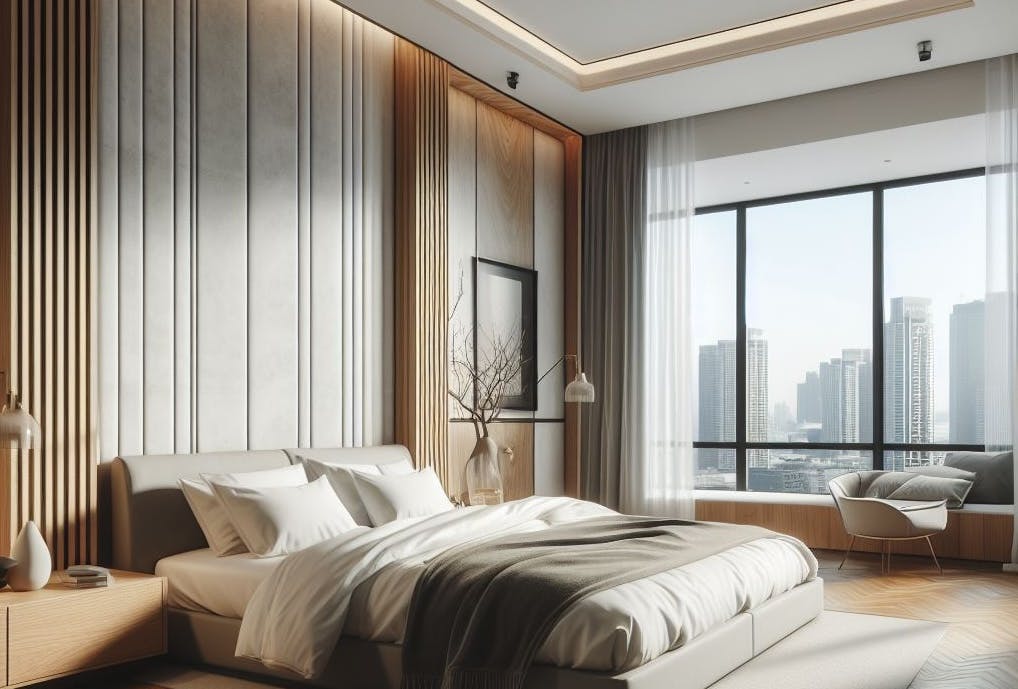AI in Interior Design: A Sustainable and Personalized Approach



In recent years, artificial intelligence (AI) has made significant strides across various industries, and interior design is no exception. From optimizing space utilization to enhancing aesthetics, AI is reshaping the way we conceptualize and create living spaces. In this article, we delve into the impact of AI on interior design, exploring its benefits, challenges, and future prospects.
1. Customized Design Solutions
Personalized Aesthetics
AI algorithms analyze user preferences, lifestyle, and spatial requirements to generate customized design solutions. Whether it's choosing color palettes, furniture layouts, or lighting schemes, AI tailors recommendations to individual tastes. For instance:
- Color Harmony: AI tools can suggest harmonious color combinations based on psychological and cultural factors. Imagine a living room where the wall colors complement the occupants' personalities and evoke positive emotions.
- Furniture Arrangement: AI-powered simulations help visualize different furniture layouts, optimizing traffic flow and maximizing functionality. It considers factors like natural light, room dimensions, and user preferences.
Sustainability Focus
- Material Selection: AI evaluates the environmental impact of materials used in interior design. It recommends eco-friendly alternatives, such as recycled wood, low-VOC paints, and energy-efficient appliances.
- Energy Efficiency: Smart home systems powered by AI regulate energy consumption. From adjusting thermostat settings to controlling lighting, AI ensures optimal energy use while maintaining comfort.
2. Enhanced Creativity and Efficiency
Generative Design
- AI generates novel design concepts by combining existing patterns and styles. Designers can explore countless possibilities, pushing creative boundaries. For instance:
- Furniture Design: AI-generated furniture prototypes blend aesthetics, functionality, and sustainability. These designs often surprise with unconventional shapes and materials.
- Lighting Fixtures: AI-inspired lighting designs incorporate intricate patterns and energy-saving features.
Time-Saving Tools
- Automated Space Planning: AI streamlines the design process by automating tasks like space planning, furniture selection, and 3D modeling. Designers can focus on refining ideas rather than repetitive manual work.
- Real-Time Rendering: AI-powered rendering tools provide instant visualizations. Designers can experiment with materials, lighting, and textures, receiving immediate feedback.
3. The Role of AI in Interior Design: Common Questions Answered
Is there an AI that can do interior design?
Yes, several AI platforms specialize in interior design. These tools analyze user input, preferences, and existing design libraries to generate personalized recommendations. Examples include HomeDesigns.ai, RoomSketcher, and Havenly. These platforms assist both homeowners and professional designers in creating functional and aesthetically pleasing spaces.
Will AI replace interior designers?
While AI enhances efficiency and creativity, it is unlikely to replace human designers entirely. Interior design involves empathy, intuition, and understanding client needs—qualities that AI lacks. Instead, AI serves as a valuable collaborator, augmenting designers' capabilities and speeding up certain tasks.
Can I use AI to design a house?
Absolutely! AI tools allow homeowners to experiment with design elements, visualize layouts, and explore different styles. Whether you're renovating a room or planning an entire house, AI can assist in material selection, color coordination, and space optimization. However, professional input remains essential for a holistic and personalized design.
In conclusion, AI is a powerful ally in interior design, offering personalized solutions, enhancing creativity, and promoting sustainability. As technology evolves, designers and homeowners alike can look forward to a harmonious blend of human ingenuity and AI-driven innovation.